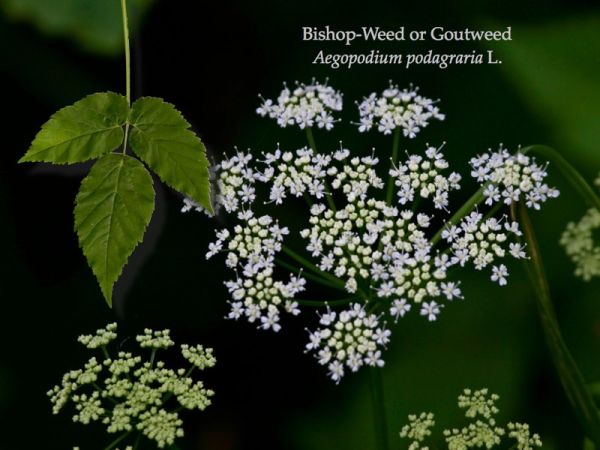
This flower stumped me for years.
It’s everywhere along the trails in Schenley and Frick Parks but I could not key it out in my Newcomb’s Guide — and for good reason. It’s not in the book!
Last weekend I learned that this is goutweed, ground-elder or bishop-weed (Aegopodium podagraria), a Eurasian plant in the carrot family that’s gone wild. It is so successful that it’s now ranked as invasive in six states. Pennsylvania is one of them.
I’m embarassed to say it’s in my front garden but I didn’t plant it there. It spread from my neighbor’s garden next door.
When it arrived I thought it was pretty. Little did I know that nurseries advise – or ought to advise – that this plant should be kept isolated.
In Schenley Park its leaves are solid green as in this photograph but in my garden the leaves are variegated. That pretty trait is lost when it goes wild.
And wild it is! The plant forms dense, deeply-rooted patches whose removal is back-breaking work.
Since I don’t have the time to do that right now I am hoping a miracle will keep it at bay for another month until I begin the task.
I wonder if that would be waiting too long….?
(Thanks to Chuck Tague for this photo and for identifying it for me)
Oh, dear. When we moved to our house nearly 20 years ago and decided to plant a flower bed where only weeds had grown for years, a friendly neighbor said not to buy anything as he was dividing perennials and would share them, along with a really good ground cover. The ground cover turned out to be this same plant. It’s lovely when in bloom, but you’re right about its invasive habit. It also doesn’t stay pretty, but turns brown about halfway through the summer. Had I known then what I know now . . .
Oh, yes! I forgot how it turns brown halfway thru the summer. I thought it was my fault that it did this. Hah!
Thanks for the explanation of the green state. I have/had the variegated “snow on the mountain” aka bishops weed and about 2/3rds of it has gone all green. Now I know!